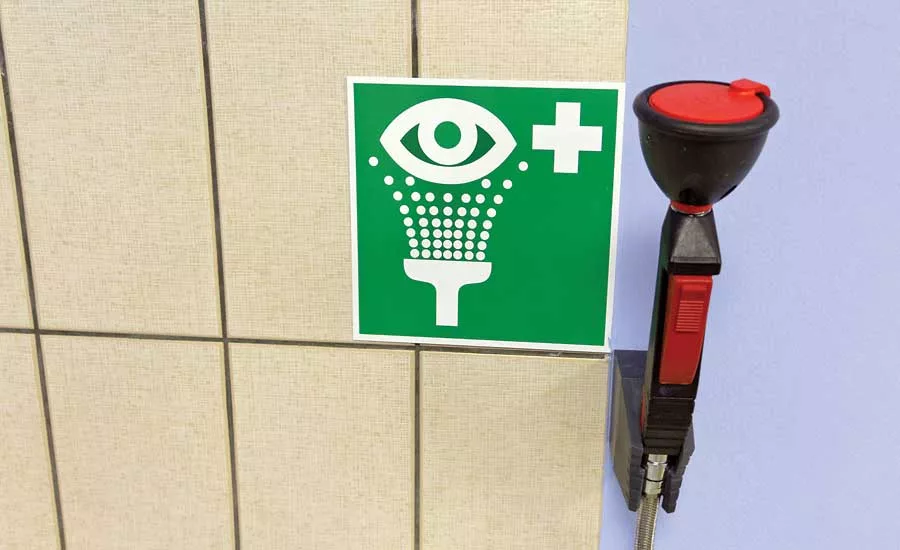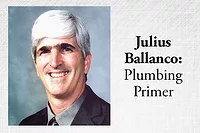Your friend in OSHA

Will you still need me? Will you still feed me?” Those are the questions Paul McCartney asked in The Beatles’ “When I’m Sixty-Four.” This month, I turn 64, and I am wondering if I will still be needed.
As you age, you don’t realize that changes gradually occur to the body. Yesterday, my world opened up again. For the first time in 25 years, I am hearing normally. I received hearing aids and immediately perceived the world differently.
Having started in construction before the advent of OSHA, hearing protection was only for wimps. Today, it is required, and with good reason. The doctor told me 25 years ago that I would eventually need hearing aids. A week ago, Dr. Gina said, “It’s time.” I knew what that meant.
OSHA was actually signed into law by President Nixon. At first, OSHA concentrated on factory employees. Eventually, they reached the construction profession. While we have this tendency to curse OSHA under our breath, in fact, they have done wonderful things for our profession.
I will agree that the setup of our trucks has changed because of OSHA. We also have training requirements that previously did not exist. However, all of the changes are to provide long-term protection for all employees.
Another area where OSHA interacts with the plumbing profession is the requirement for emergency fixtures. Emergency showers, emergency eye washes, and emergency face-washing systems are required by OSHA in certain facilities. You can look all day long in the plumbing code, however, and you will not find where these emergency fixtures are required.
While the plumbing code doesn’t require emergency fixtures, the code does regulate the installation of the fixtures. And within the past few years, the plumbing codes have added requirements for a tepid supply of water to these emergency fixtures. You will notice that they do not specify a temperature. The temperature is for the engineer or building owner to figure out.
Basically, tepid water is considered to be in the range of 80-95° F. In the good ole days, emergency fixtures only required a supply of cold water. The problem became that employees needing an emergency fixture were being exposed to hypothermia. That’s a fancy word for meaning they were freezing their butts off with the cold water.
Realize that when an emergency fixture is used, OSHA specifies how long a person must use the emergency fixture as well as the flow rate to the fixture. The standard minimum time to use an emergency fixture is 15 minutes. The flow rate is 20 gpm for an emergency shower, 0.4 gpm for an eyewash station, and 3 gpm for a face-washing station.
All of that water must now be tepid. That requires a supply of hot water for the emergency fixtures.
If you did the quick calculations, you realize that an emergency shower must provide at least 300 gallons of water. Of course, not all of that water is required to be hot water. If your cold water supply is 50° and the water heater is set for 140°, you would be required to have 116 gallons of hot water available to supply the shower with 85° water.
If a facility has 10 emergency showers, you would not multiply the hot water demand by 10. The facility would still only require 116 gallons of hot water because, for emergency fixtures, the assumption is only one fixture is used at a time. Emergency fixtures are rarely used. There is an extremely low probability of two emergency fixtures being used at the same time. Hence, the design only has to be based on a single fixture being discharged.
The time you would multiply the demand is when the emergency fixtures are located right next to one another. There is a possibility of two people in the immediate area needing the two fixtures sitting side by side. But if the emergency fixtures are all remote from one another, there is no need to supply more than one fixture at a time.
Two questions that I am often asked about emergency fixtures are:
- Is the tepid water requirement retroactive to all emergency fixtures?; and
- Where does the water go?
We tend not to have retrogressive or retroactive laws in the plumbing profession. Realize that the tepid requirement only applies to new fixtures under the plumbing code. OSHA decides whether the requirement applies to existing showers. I have read the Federal law many times. You can read it either way — as applying to all emergency fixtures, or as only applying to new fixtures. It will really depend on how the local OSHA inspector interprets the law.
Facilities run into problems when they move an emergency fixture. Once the fixture is relocated, the new fixture requirements in the plumbing code apply. Then, you need a supply of tepid water. The problem in existing facilities is that the hot water piping is normally not anywhere near the emergency fixtures.
Within the past few years, plumbing manufacturers have helped solve this problem. There are now instantaneous electric water heaters for emergency fixtures. The water heaters only heat the water to the tepid range. You can locate these water heaters close to the emergency fixture. Thus, you don’t need to have a long run of hot water piping.
As for where to discharge the water from an emergency fixture, the plumbing codes do not require a drain. You can discharge the water to the floor. That may sound strange, but if you install a floor drain near the fixture, that drain may be classified as receiving hazardous or chemical waste. Hence, the drainage piping system would have to meet all the special waste requirements, including piping material and waste neutralization or treatment.
You will find that the engineer will often design the emergency fixture to discharge into a vault. The concept is to analyze the water and determine where it should be discharged after it is collected. Again, the concern is whether the waste water falls into the range of special waste.
I like to think that not only is OSHA your friend for protecting all employees, they are also your friend by providing work with the installation of emergency fixtures.
Finally, wear your hearing protection. You’ll thank me when you’re 64.
Looking for a reprint of this article?
From high-res PDFs to custom plaques, order your copy today!






